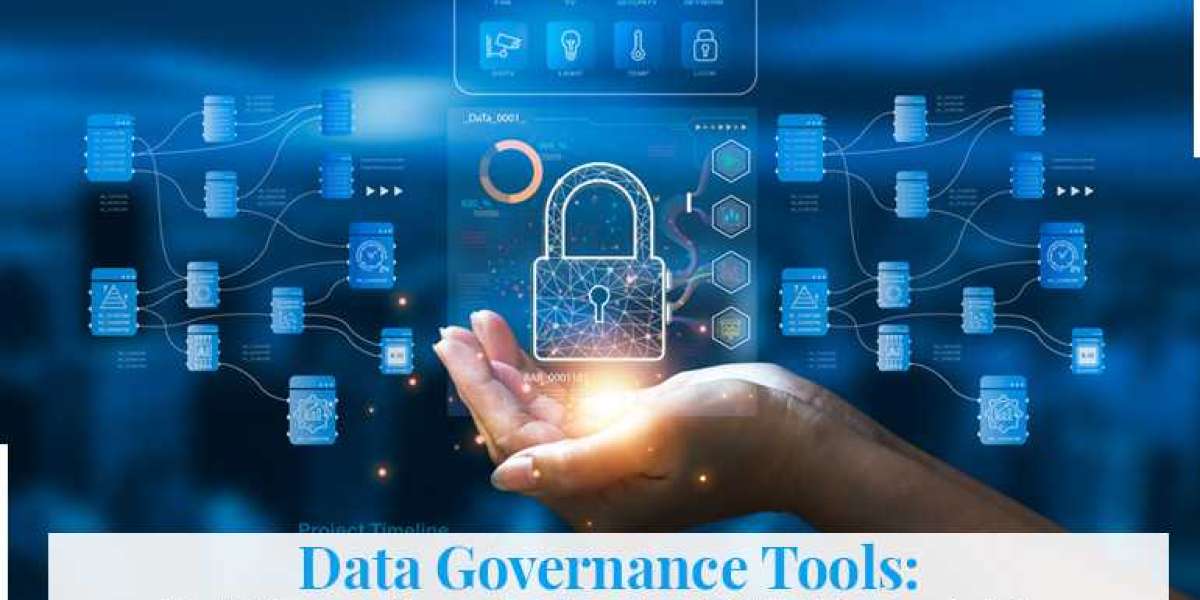In today's data-driven business landscape, the importance of data governance tools cannot be overstated. These tools are the backbone of effective data management, ensuring data is accurate, secure, and compliant with regulations. But their role goes beyond mere Compliance. Governance tools for data lay the foundation for reliable insights, enabling organizations to make informed decisions, foster innovation, and achieve sustainable success.
The Data Governance Landscape
Before delving into the significance of data governance tools, it's essential to understand the data governance landscape. Data governance encompasses the processes, policies, and standards that ensure data is managed efficiently and responsibly. It involves defining data ownership, establishing data quality standards, and enforcing data security measures.
However, in the absence of proper tools, managing data governance manually can be a daunting task. As businesses accumulate vast volumes of data from various sources, the need for automation and scalability becomes apparent. This is where data tools step in.
The Role of Data Governance Tools
Governance tools are specialized software solutions that streamline and enhance data governance efforts. They provide a structured framework for managing data assets, enabling organizations to:
- Ensure Data Quality and Consistency:
- Tools enforce data quality standards, automatically identifying and rectifying errors.
- They maintain consistency across data sources, ensuring that data is uniform and accurate.
- Enhance Data Security:
- Governance tools implement access controls and encryption to protect sensitive data.
- They monitor data usage and detect anomalies that may indicate security breaches.
- Facilitate Compliance:
- Data governance tools automate compliance checks, ensuring data practices align with regulations.
- They maintain audit trails to demonstrate Compliance to regulatory authorities.
- Establish Data Ownership:
- Governance tools for data define data ownership and accountability, clarifying who is responsible for data assets.
- They track data lineage, showing how data flows through the organization.
- Foster Collaboration:
- Data tools for governance facilitate collaboration among different departments and stakeholders.
- They provide a centralized platform for data-related discussions and decision-making.
Building a Foundation for Reliable Insights
Reliable insights are the lifeblood of effective decision-making. Whether it's understanding customer behavior, optimizing operations, or identifying growth opportunities, organizations rely on insights derived from data.
Here's how data governance tools contribute to building this foundation:
- Data Trustworthiness:
- Inaccurate or inconsistent data can lead to misguided decisions. Governance tools ensure data quality and integrity, instilling trust in the data used for analysis.
- When stakeholders have confidence in the data, they are more likely to rely on the insights generated.
- Compliance and Risk Mitigation:
- Non-compliance with data regulations can result in fines and reputational damage. Data governance tools help organizations stay compliant by automating compliance checks and data protection measures.
- These tools safeguard the organization's reputation and financial well-being by reducing non-compliance risk.
- Data Accessibility and Transparency:
- To derive insights, data must be accessible to those who need it. Tools for data governance establish data ownership and access controls, ensuring that the right people can access the correct data.
- Additionally, they provide transparency into data lineage, showing how data is transformed and used throughout the organization. This transparency enhances the credibility of insights.
- Data Consistency and Integration:
- Many organizations deal with data from multiple sources. Data governance tools ensure that data is consistent and integrated, enabling comprehensive analysis.
- When data is consistent, insights can be aggregated across various sources to provide a holistic view of business operations.
- Collaboration and Knowledge Sharing:
- Generating insights is often a collaborative effort. Governance tools for data provide a platform for data-related collaboration, allowing stakeholders to share knowledge, ask questions, and collaborate on data projects.
- This collaborative environment fosters innovation and leads to more robust insights.
Challenges and Considerations
While data governance tools offer immense benefits, their adoption is not without challenges:
- Implementation Complexity:
- Integrating data tools for governance into existing systems can be complex. Organizations must plan for a smooth implementation process and ensure the tools align with their unique data governance needs.
- Change Management:
- Introducing new tools often requires a cultural shift. Employees may need training to understand and embrace data governance practices facilitated by the tools.
- Cost Considerations:
- Data governance tools come with costs, including software licensing, training, and maintenance. Organizations must weigh these expenses against the expected benefits.
- Scalability:
- As data volumes grow, organizations must ensure that their chosen data governance tools can scale to meet evolving needs.
Future Trends in Data Governance Tools
The landscape of data governance is continuously evolving. Several trends are shaping the future of data governance tools:
- Integration of Artificial Intelligence (AI):
- AI-powered data governance tools can automate data classification, identify anomalies, and predict data quality issues.
- Enhanced Data Privacy Capabilities:
- With the growing emphasis on data privacy, future tools will focus on enhancing data protection measures and ensuring Compliance with evolving regulations.
- Cloud-Based Solutions:
- Many organizations are moving their data to the cloud. Future governance tools will provide seamless integration with cloud platforms and support hybrid data environments.
- Improved Data Lineage Visualization:
- Understanding how data flows through an organization is crucial. Future tools will offer more advanced data lineage visualization capabilities.
Conclusion
In the age of data, organizations that harness the power of data governance tools are better equipped to derive reliable insights, make informed decisions, and achieve sustainable success. These tools are the foundation for data excellence, ensuring data quality, security, and Compliance.
As organizations navigate an increasingly complex data landscape, the role of data governance tools becomes indispensable. They provide the structure and automation needed to manage data effectively, fostering a culture of data-driven decision-making.
While challenges may arise during their adoption, the benefits of data governance tools far outweigh the drawbacks. With the right tools and a commitment to data governance best practices, organizations can build a robust foundation for reliable insights, setting the stage for data-driven excellence and innovation in the modern business landscape.







